Since beginning science operations over the summer, the James Webb Space Telescope has shed new light on some of the space industry’s most stunning discoveries.
Most recently, the Webb team used the telescope’s infrared vision to penetrate Titan’s hazy atmosphere, revealing what is thought to be a methane sea, sand dunes and clouds.
The $10 billion-dollar observatory has also released stunning images in new detail and vibrant color, capturing some of the earliest galaxies that existed fewer than 500 million years after the Big Bang and the Carina Nebula’s stellar nurseries.
Neil deGrasse Tyson, the director of the Hayden Planetarium in New York, said that so much had to go right, that expectations were tempered just in case something went wrong.
IMAGE FROM NASA’S WEBB TELESCOPE REVEALS EARLY STELLAR FORMATION IN ‘RARE’ FIND
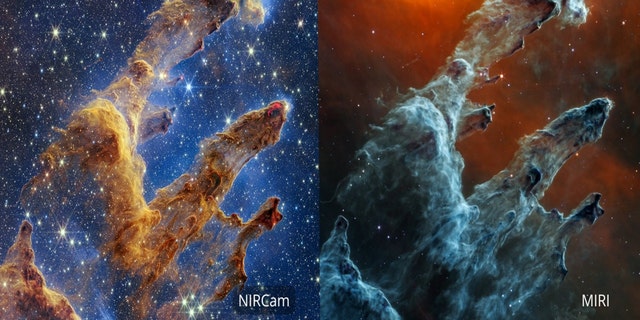
NASA’s James Webb Space Telescope’s mid-infrared view of the Pillars of Creation
(Credits: NASA, ESA, CSA, STScI; Joseph DePasquale (STScI), Alyssa Pagan (STScI))
“It exceeded our expectations by meeting the specifications of the design,” he told Fox News Digital in an earlier interview. “And so, looking at those images, it is clear we are in a new astrophysics era,” deGrasse Tyson continued. “Hubble was grandpa’s telescope. We’ve stepped through a portal to another window on the universe never before achieved.”
Launched into orbit in December 2021, the James Webb Space Telescope is an international venture between NASA, the European Space Agency and the Canadian Space Agency.
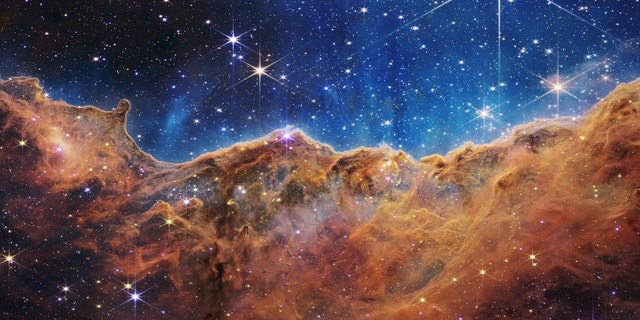
What looks much like craggy mountains on a moonlit evening is actually the edge of a nearby, young, star-forming region NGC 3324 in the Carina Nebula. Captured in infrared light by the Near-Infrared Camera (NIRCam) on NASA’s James Webb Space Telescope, this image reveals previously obscured areas of star birth.
(IMAGE: NASA, ESA, CSA, STScI)
In a prior interview with Fox News Digital, NASA Administrator Bill Nelson touted its astounding capabilities, including the ability to peer back more than 13 billion light-years.
The telescope uses its Near Infrared Camera, or NIRCam, to pull back the curtain on some of the Hubble Space Telescope’s most popular finds. DeGrasse Tyson noted that the Hubble Space Telescope can see in the ultraviolet part of the spectrum, something humans are not capable of doing.
“Telescopes tune by design to see the universe in various bands of light, depending on what the needs of the designers were,” the renowned astrophysicist said.
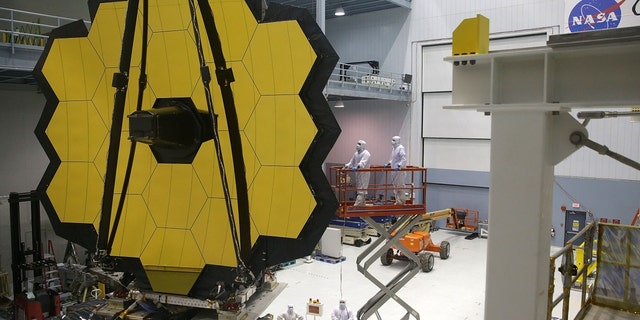
GREENBELT, MD – NOVEMBER 02: Engineers and technicians assemble the James Webb Space Telescope November 2, 2016, at NASA’s Goddard Space Flight Center in Greenbelt, Maryland.
((Photo by Alex Wong/Getty Images))
STRIKING NASA IMAGES REVEALS IO’S VOLCANO-LACED SURFACE
Looking at the images from the telescope, the colors are translated for the human eye by the James Webb Space Telescope.
With RGB coding on computers, deGrasse Tyson notes that the brain makes an image in three bands of light and assigns a color to each one before putting them together to reach the full color image. He said that can be done with any three bands anywhere in the spectrum.
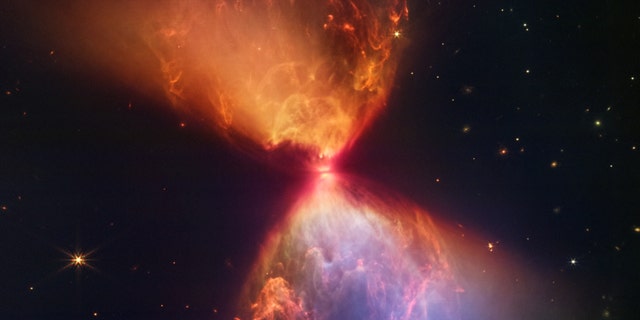
The protostar within the dark cloud L1527, shown in this image from NASA’s James Webb Space Telescope Near-Infrared Camera (NIRCam), is embedded within a cloud of material feeding its growth.
(Credits: NASA, ESA, CSA, and STScI. Image processing: J. DePasquale, A. Pagan, and A. Koekemoer (STScI))
Many of the photos captured in the infrared reveal galaxies previously shrouded by dust or clouds. Deep field shots show magnificent spiral galaxies along with pinpricks.
But when examining galaxies from back when the universe was fewer than a billion years old, the question arose: Are scientists looking back at some of the earliest or the oldest galaxies?
“The light you see from the most distant galaxies is the oldest light in the universe. The oldest light from stars in the universe. It’s been traveling for 13 billion years. So, in that sense, it’s the oldest. Because it’s coming from the newest galaxies,” deGrasse Tyson said. “It’s just-born galaxies sending light into the universe, and it’s been traveling for 13 billion years. So, that’s how we have to think about the uses of the worlds ‘old’ and ‘new.’”
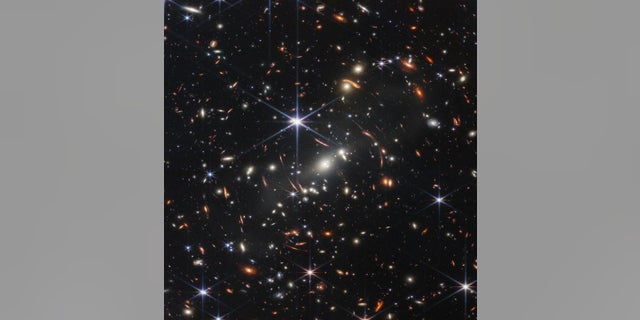
The first released Monday from the James Webb Space Telescope shows galaxies around each other whose light has been bent, NASA officials said.
(NASA)
CLICK HERE TO GET THE FOX NEWS APP
When asked what he would do with the ability to operate the James Webb Space Telescope, deGrasse Tyson said he would point it at a random spot in space.
“Unguided by my expectations of what it should find. So that it, which is prying open a new window to the universe, will be allowed to discover things – answer questions that I don’t even yet know to ask.”
